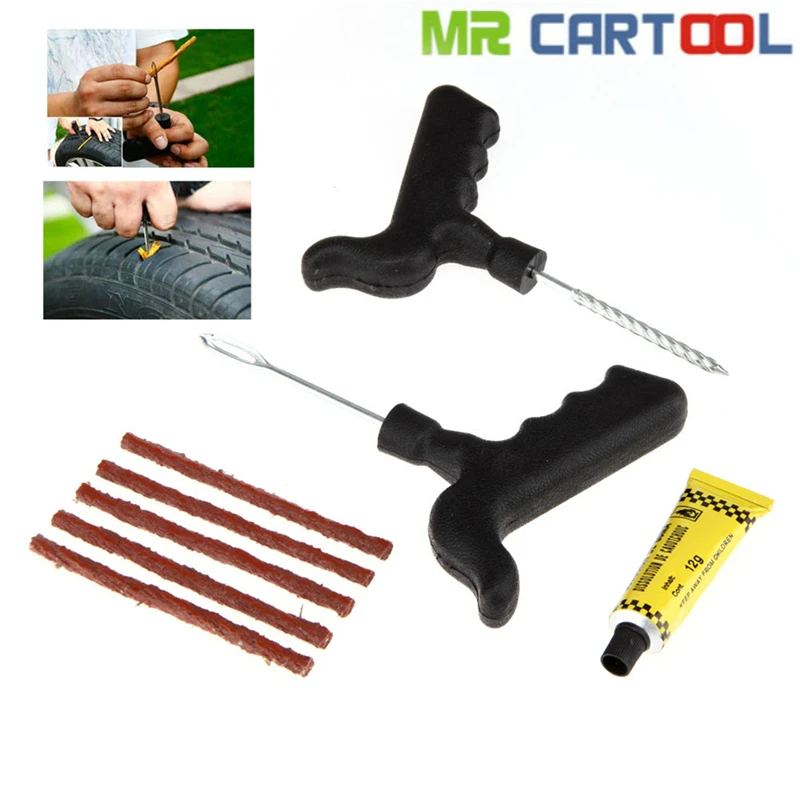If you ride long enough, you’re eventually going to get a flat tire. It's inevitable.
Recommendations aside, most riders do what they need to do to get home. This is certainly not an approved repair, but it allowed the rider to get out of the woods. Photo by Lemmy.
And since most modern motorcycles roll on radial tubeless tires, it’s possible to plug the puncture. But are plugs reliable? Are they even safe? Let’s dive into the nitty gritty of tire repair so you know when it’s OK to plug a tire and when it ought to be replaced.
The fact is, motorcyclists fix flats in tubeless tires all the time, but they could be plugging away indiscriminately, with limited knowledge of the proper repair process or the risks associated with riding on a repaired tire.
After all, there’s a big difference between an emergency fix, where you stuff three rope plugs into a gaping wound and ride slowly with your hazards on just to get home, and what we would call a long-term or permanent fix that you can ride on like normal.
I’ve ridden from Los Angeles to Boston on a plugged tire, and even done track days on repaired rubber, so I'm confident that plugs can be safe and reliable. Photo by Ari Henning.
Just to be clear, not all tire manufacturers condone repairs, even in emergency situations. That’s because just like riding a motorcycle, there’s danger in riding on a repaired tire, so some manufacturers will simply tell you to call a tow truck and order a new tire. The integrity of your rubber is really important, so a fresh tire is definitely the safest option, but it’s not what you want to hear if you just picked up a nail in a nearly new $200 Pirelli.
Officially, plugs should only be installed in the center portion of the tire. Luckily, most common punctures occur at the contact patch, within the center 75 percent of the tread. Photo by Spenser Robert.
Now, those tire makers that do allow for repairs of any kind, even temporary fixes just to get home, state that the puncture has to meet certain criteria in terms of the location, shape, and size.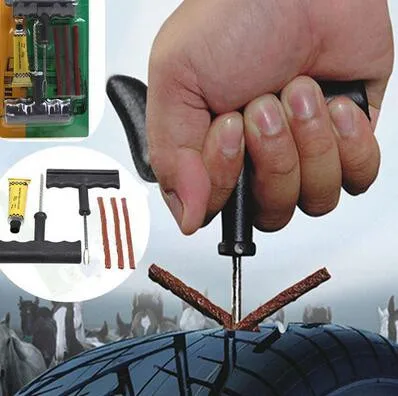
Tire makers and plug kits say you need a minimum of 1.5 millimeters of tread to retain a plug. Photo by Spenser Robert. For starters, the eligible repair area is limited to the crown of the tire, specifically the center 75 percent of the tread. That’s because the shoulders flex too much and might spit the plug out like a sour grape. The sidewalls are off limits to plugs for the same reason.
Editor's note: See the video version of this article in The Shop Manual on the RevZilla YouTube channel.
The tire also needs to have a reasonable amount of tread left to retain the plug. Technically, the minimum is 1/16 inch or about 1.5 millimeters. An easy way to check tread depth is to stick a penny in the groove. If the top of Abe’s head is visible, you’re working with less than 1.5 millimeters of tread, which means you don’t have enough meat to safely hold a plug.
The size of the hole you can fill is determined by how many rope plugs you have on hand, am I right?! For permanent repairs, even the most lenient tire manufacturers draw the line at seven millimeters. Photo by Spenser Robert.
Photo by Spenser Robert.
Assuming the puncture is within the allowable area, and there’s enough depth left to the tread, you then you have to consider the size and shape of the damage. According to tire manufacturers, tears, slices, and oblong punctures can’t be repaired. Luckily, those types of injuries are pretty rare. For the more common round holes, like you’d get from a nail or screw, the maximum acceptable size runs from three millimeters to seven millimeters, depending who you ask. For reference, seven mm is just a little smaller than the diameter of a standard BIC pen or your classic #2 pencil.
Now, again, that’s all for emergency fixes to get you home. However, for a repair to be considered permanent, at least according to tire manufacturers, all that criteria needs to be met and you’ll need to take the tire off the rim and install a combined plug/patch, which both fills the wound with a plug and covers the hole with a patch from the inside, providing two means of sealing.
To be considered a permanent repair, a combined plug/patch must be installed from the inside of the tire, and the interior of the tire must be inspected for damage. Photo by Spenser Robert.
It’s also important to carefully inspect the interior of the tire once it’s off the rim. Tubeless tires don’t usually lose their pressure all at once when punctured — they’re designed not to — so it’s possible for the rider to cruise along on a deflating tire. This isn’t uncommon and can lead to internal tire damage, either from the carcass overheating or from the nail or whatever made the puncture gouging the tire’s inner surface. Damage to the liner could result in a slow leak, could allow air to creep between the plies and cause tread separation, or could let moisture get in around the steel belts and corrode them, none of which is good.
I carry two types of plug kits with me when I ride: Gas-station variety rope plugs for big ugly punctures (left), and a DynaPlug kit for smaller holes (right).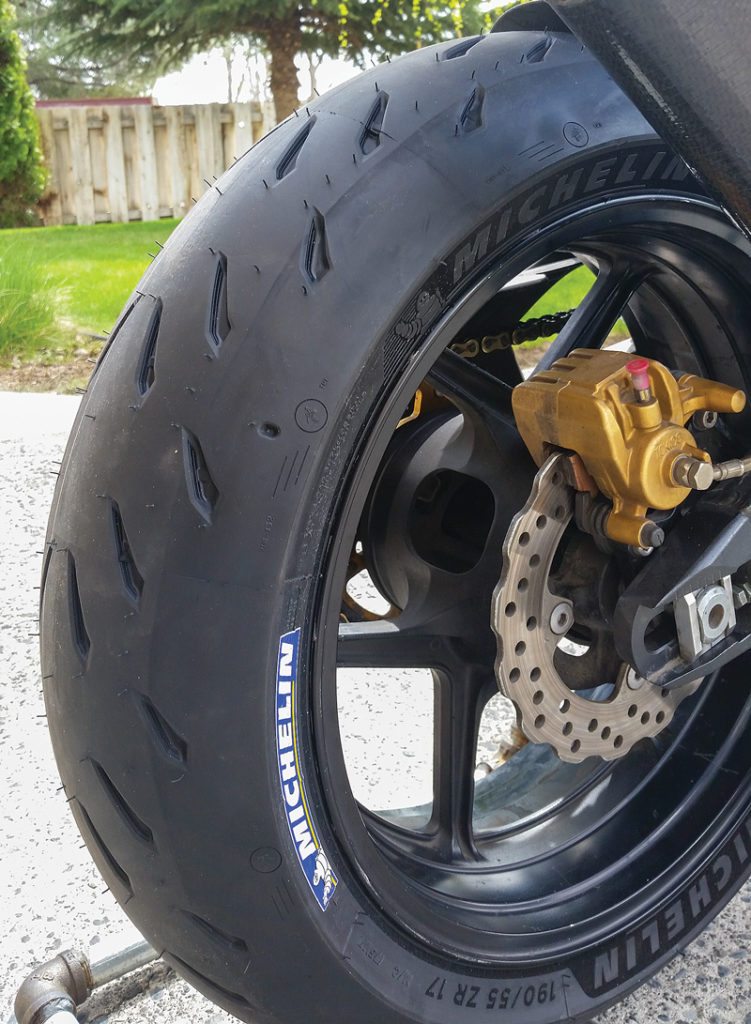 Photo by Spenser Robert.
Photo by Spenser Robert.
Another caveat for repaired tires is that you’re supposed to reduce their speed rating. Some manufacturers simply cap the maximum speed of a repaired tire at 75 mph.
And, while it’s obviously important to know when it’s OK to plug a tire, you also need to be familiar with how to install a plug. So the next time you’re about to replace a tire, run some nails or screws into it, read your repair kit’s instructions, and practice the process so you’re familiar with it before you’re stuck on the side of the road after dark.
Search
Home Features How to Plug and Repair a Tubeless Motorcycle Tire
Sacre bleu! The discovery we all dread, usually right before a ride. Don’t attempt to repair a severe gash or cut, or a puncture in the sidewall of the tire. Once you get the hole plugged, it’s off to your dealer for a new tire.
Once you get the hole plugged, it’s off to your dealer for a new tire. Considering how bulletproof the rest of our motorcycles have become, it’s ironic that it only takes a little 1 ½-inch box nail in a tire to bring the whole show to a halt. We’re fortunate today that tubeless tire technology prevents intrusions by nails, screws and other foreign objects from becoming catastrophic blowouts. The object usually stays in the hole, the only place from which the tire can lose air, so it deflates more slowly than a puncture in a tire with a tube on an unsealed spoked wheel (which can lose air through all of the spoke nipples and even the tire bead). But even if that pointy thing does stay put and flush with the tread surface, as it flexes back and forth in the carcass the tire will eventually deflate enough to become a problem. Hopefully you will have noticed its presence or even received a low tire-pressure warning before that happens.
Of course, if it doesn’t stay put or is large enough to stick out of the tire (like a 6-inch gutter nail — don’t ask), the tire will probably deflate rapidly enough to strand you by the roadside.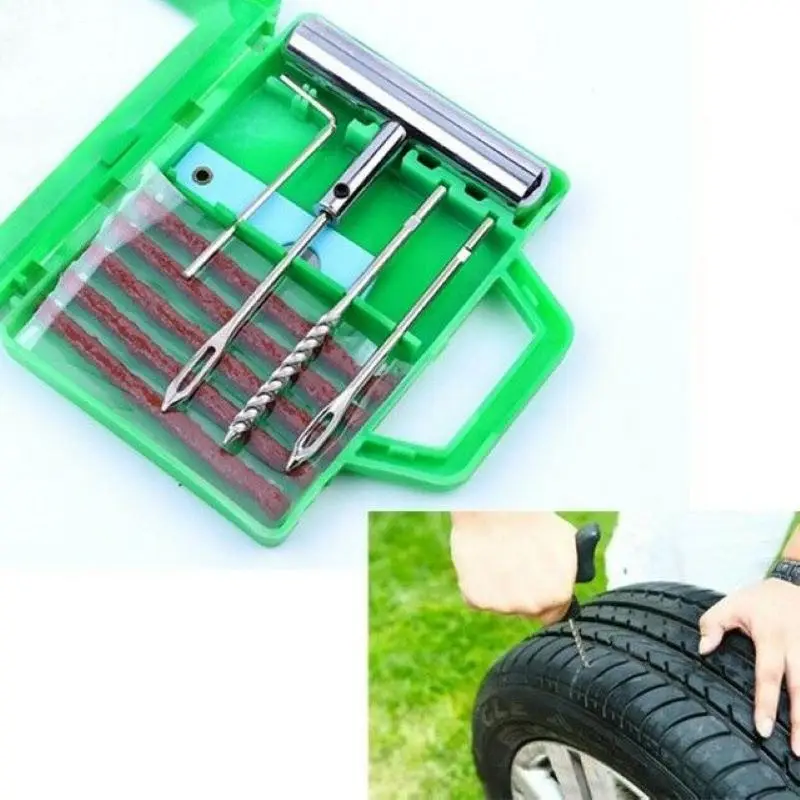 Unless you’re lucky enough to be next to a motorcycle shop at the time, you’re going to need either a good roadside assistance plan or a tubeless tire repair kit. (We’ll cover tube-type tire roadside repairs in another installment).
Unless you’re lucky enough to be next to a motorcycle shop at the time, you’re going to need either a good roadside assistance plan or a tubeless tire repair kit. (We’ll cover tube-type tire roadside repairs in another installment).
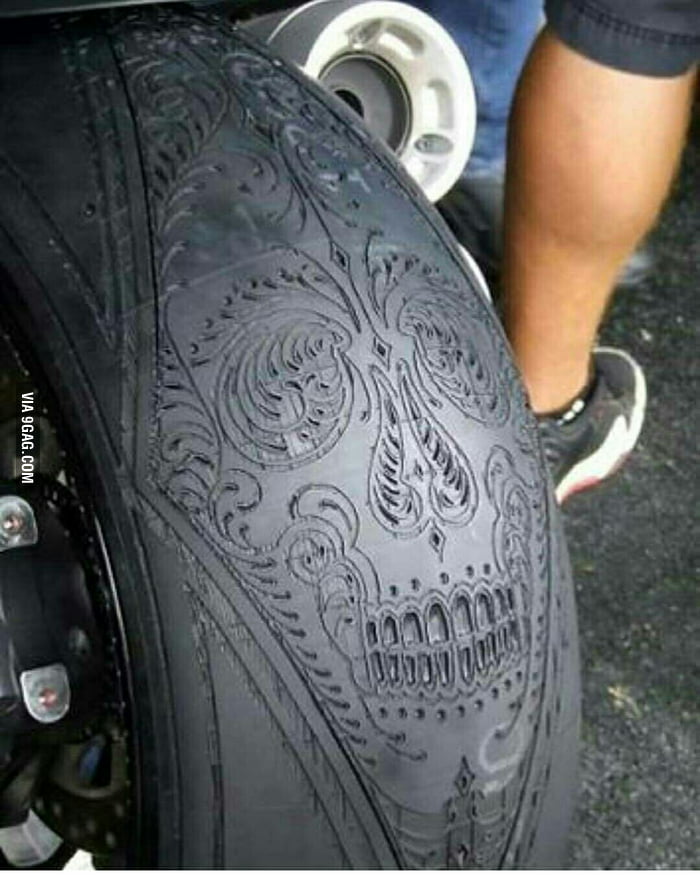 Use the knife in the plug kit or any sharp blade to cut the plug flush with the tread surface. Give it a few minutes to set up, inflate the tire and then spray some water or a soapy solution on the plug to make sure it’s holding air.
Use the knife in the plug kit or any sharp blade to cut the plug flush with the tread surface. Give it a few minutes to set up, inflate the tire and then spray some water or a soapy solution on the plug to make sure it’s holding air.Here at Rider we’ve fixed enough tubeless punctures to appreciate that the most dependable tire repair kit you can carry uses rubber strings or “worms” for the plug that gets inserted into the tire, preferably the large red ones like those in the T-Handle Tubeless Tire Repair Kit from Stop & Go. There are more convenient plug types, but the strings rarely let us down. If you’ve had good luck with liquid sealers, installed either pre- or post-puncture, more power to you — we often carry Slime for tube-type tires on bikes that have tubes in the hope of avoiding a roadside tire dismount. But we change bikes too often to make using the pre-installed sealers practical, and prefer to avoid irritating the mechanic who has to change a tubeless tire on a wheel full of messy sealer.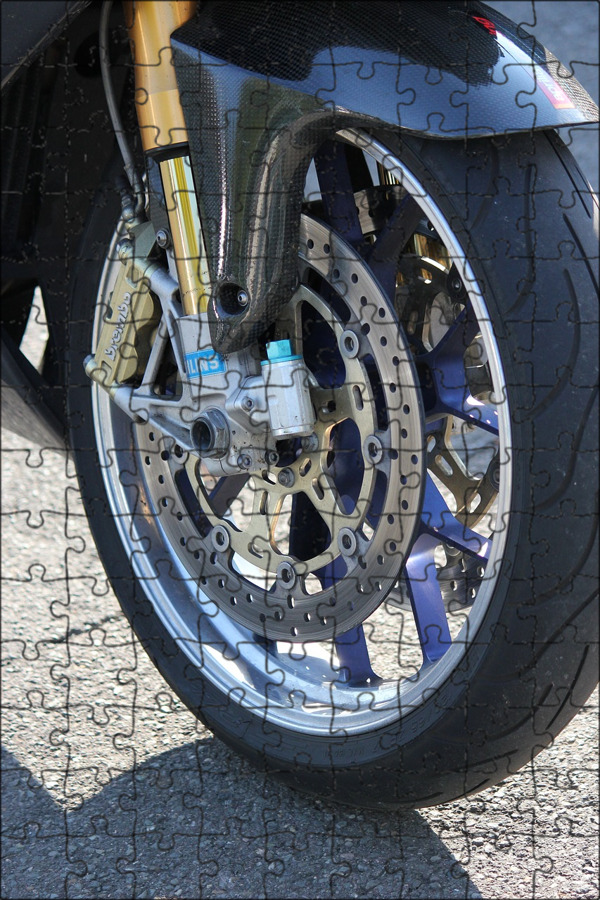
Advertisement
Repair kits that use string plugs often come with rubber cement, which — depending on the string type — may not be necessary to complete the repair, but at a minimum it acts as a lubricant to ease inserting the plug, and seems to help vulcanize the plug to the tire. It’s important to keep your glue supply fresh (preferably unopened), or you may find that it has dried out when you need it.
Stop & Go’s T-Handle Kit has everything you need to affect a solid repair. Just add pliers and something with which to inflate the tire (CO2 cartridges or a compressor).Stop & Go also offers a plugging kit that uses special mushroom-shaped plugs that don’t require glue, and the pocket version doesn’t take up any more space than the T-Handle Kit, so we often carry both. A portable mini compressor beats the heck out of CO2 cartridges if you have the space. Stop & Go’s is small, inexpensive and has a built-in gauge.No matter what sort you use, any plug inserted from the outside should be considered a very temporary repair used to get you and your bike to the nearest replacement tire.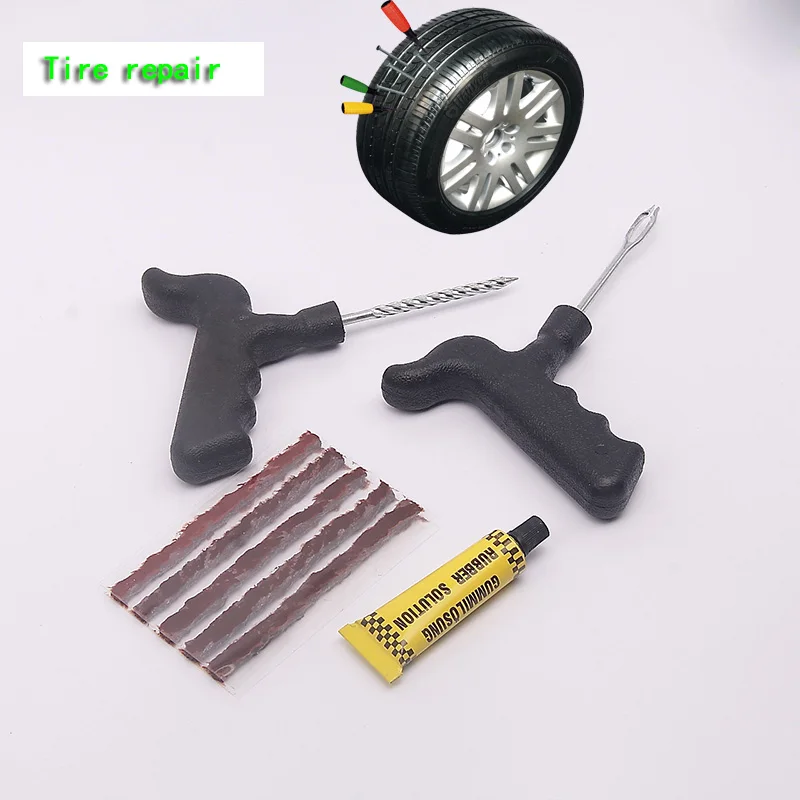 Limit your speed per the plug kit instructions, and replace the tire as soon as possible. Special patch plugs inserted from the inside of a tubeless tire are certainly safer, but even if you can find someone who will install one for you, every tire manufacturer (and even those who sell patch plugs) recommend replacing the tire instead since it has to come off anyway.
Limit your speed per the plug kit instructions, and replace the tire as soon as possible. Special patch plugs inserted from the inside of a tubeless tire are certainly safer, but even if you can find someone who will install one for you, every tire manufacturer (and even those who sell patch plugs) recommend replacing the tire instead since it has to come off anyway.
The photos in this article cover the basic plugging process with rubber strings. Depending on the size of the hole, you may need more than one — I once used three in an ATV tire and it got me back to camp.
Pricing and equipment information for motorcycles and maxiscooters is indicative and is provided for reference only. Information about prices and equipment of motorcycles and maxi-scooters is not a public offer.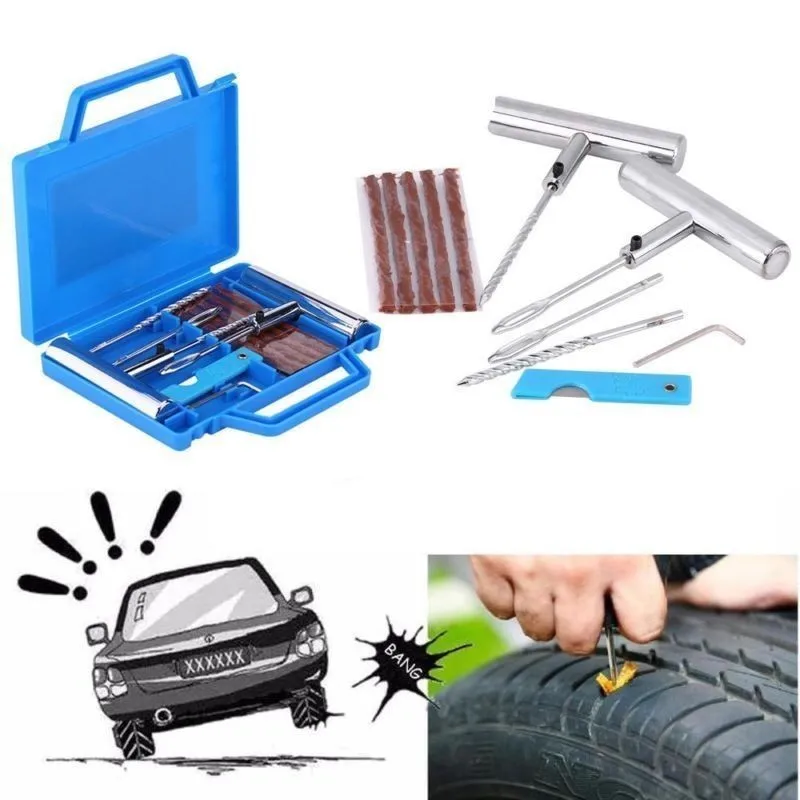 Exact information about prices and equipment of cars can be obtained from the official dealer of BMW Eurosib.
Exact information about prices and equipment of cars can be obtained from the official dealer of BMW Eurosib.
Price and equipment information for motorcycles and maxi-scooters is indicative and is provided for reference only. Information about prices and equipment of motorcycles and maxi-scooters is not a public offer. Exact information about prices and equipment of cars can be obtained from the official dealer of BMW Eurosib.
Information on prices and equipment of motorcycles and maxi-scooters is indicative and is provided for reference. Information about prices and equipment of motorcycles and maxi-scooters is not a public offer. Exact information about prices and equipment of cars can be obtained from the official dealer of BMW Eurosib.
Price and equipment information for motorcycles and maxi-scooters is indicative and is provided for reference only. Information about prices and equipment of motorcycles and maxi-scooters is not a public offer. Exact information about prices and equipment of cars can be obtained from the official dealer of BMW Eurosib.
Information on prices and equipment of vehicles is indicative and is provided for reference. Information about prices and equipment of cars is not a public offer. Exact information about prices and equipment of cars can be obtained from the official dealer of BMW Eurosib.
Price and equipment information for motorcycles and maxi-scooters is indicative and is provided for reference only. Information about prices and equipment of motorcycles and maxi-scooters is not a public offer. Exact information about prices and equipment of cars can be obtained from the official dealer of BMW Eurosib.
Information on prices and equipment of motorcycles and maxi-scooters is indicative and is provided for reference. Information about prices and equipment of motorcycles and maxi-scooters is not a public offer. Exact information about prices and equipment of cars can be obtained from the official dealer of BMW Eurosib.
Price and equipment information for motorcycles and maxi-scooters is indicative and is provided for reference only. Information about prices and equipment of motorcycles and maxi-scooters is not a public offer. Exact information about prices and equipment of cars can be obtained from the official dealer of BMW Eurosib.
Information about prices and equipment of motorcycles and maxi-scooters is not a public offer. Exact information about prices and equipment of cars can be obtained from the official dealer of BMW Eurosib.
Information on prices and equipment of motorcycles and maxi-scooters is indicative and is provided for reference. Information about prices and equipment of motorcycles and maxi-scooters is not a public offer. Exact information about prices and equipment of cars can be obtained from the official dealer of BMW Eurosib.
Price and equipment information for motorcycles and maxi-scooters is indicative and is provided for reference only. Information about prices and equipment of motorcycles and maxi-scooters is not a public offer. Exact information about prices and equipment of cars can be obtained from the official dealer of BMW Eurosib.
Information on prices and equipment of motorcycles and maxi-scooters is indicative and is provided for reference. Information about prices and equipment of motorcycles and maxi-scooters is not a public offer.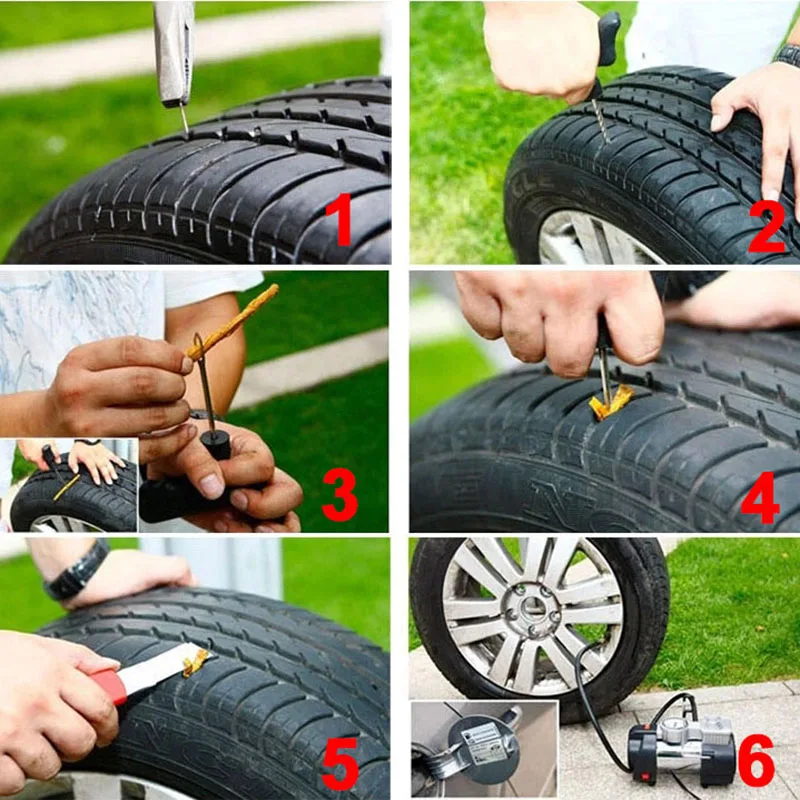 Exact information about prices and equipment of cars can be obtained from the official dealer of BMW Eurosib.
Exact information about prices and equipment of cars can be obtained from the official dealer of BMW Eurosib.
Price and equipment information for motorcycles and maxi-scooters is indicative and is provided for reference only. Information about prices and equipment of motorcycles and maxi-scooters is not a public offer. Exact information about prices and equipment of cars can be obtained from the official dealer of BMW Eurosib.
Information on prices and equipment of motorcycles and maxi-scooters is indicative and is provided for reference. Information about prices and equipment of motorcycles and maxi-scooters is not a public offer. Exact information about prices and equipment of cars can be obtained from the official dealer of BMW Eurosib.
Price and equipment information for motorcycles and maxi-scooters is indicative and is provided for reference only. Information about prices and equipment of motorcycles and maxi-scooters is not a public offer. Exact information about prices and equipment of cars can be obtained from the official dealer of BMW Eurosib.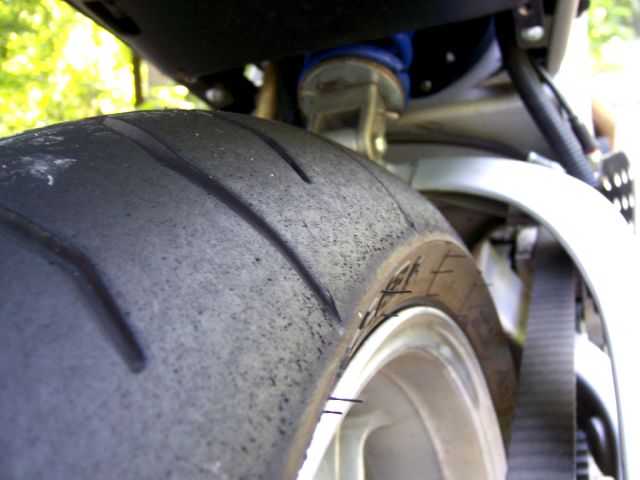
Information on prices and equipment of motorcycles and maxi-scooters is indicative and is provided for reference. Information about prices and equipment of motorcycles and maxi-scooters is not a public offer. Exact information about prices and equipment of cars can be obtained from the official dealer of BMW Eurosib.
Price and equipment information for motorcycles and maxi-scooters is indicative and is provided for reference only. Information about prices and equipment of motorcycles and maxi-scooters is not a public offer. Exact information about prices and equipment of cars can be obtained from the official dealer of BMW Eurosib.
Information on prices and equipment of motorcycles and maxi-scooters is indicative and is provided for reference. Information about prices and equipment of motorcycles and maxi-scooters is not a public offer. Exact information about prices and equipment of cars can be obtained from the official dealer of BMW Eurosib.
Price and equipment information for motorcycles and maxi-scooters is indicative and is provided for reference only.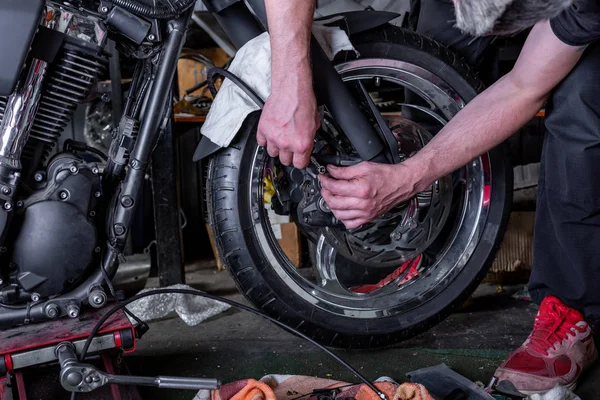 Information about prices and equipment of motorcycles and maxi-scooters is not a public offer. Exact information about prices and equipment of cars can be obtained from the official dealer of BMW Eurosib.
Information about prices and equipment of motorcycles and maxi-scooters is not a public offer. Exact information about prices and equipment of cars can be obtained from the official dealer of BMW Eurosib.
Information on prices and equipment of motorcycles and maxi-scooters is indicative and is provided for reference. Information about prices and equipment of motorcycles and maxi-scooters is not a public offer. Exact information about prices and equipment of cars can be obtained from the official dealer of BMW Eurosib.
Additional equipmentWhen choosing additional equipment, the price changes automatically
Adapter 7-13
2 700 rubles
Spare wheel holder МЗСА 3105.0003
3 300 rubles
Spare wheel 185/R14С stamped disc
13 000 rubles
Snowmobile skid plates
3 750 rubles
Tent frame Н1800 mm 352018 МЗСА 8541. 0031
0031
18 000 rubles
Soft Ball Cap (diameter 50 mm)
300 r.
Protective pad Start track novo-15
1 150 rubles
Protective pad Start track novo-8
1 100 rubles
Protective pads Start track novo-15 (set No. 1) 3.5 m
17 250 rubles
Ratchet strap
1 350 rubles
Load shackle (optional)
660 rubles
Support column 200 МЗСА 2740.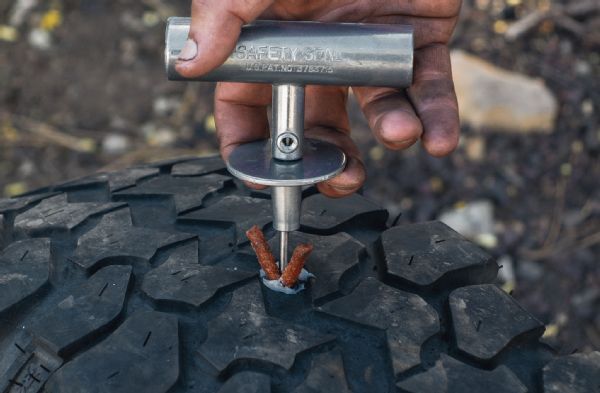 0002
0002
4 100 rubles
Mounting kit included with cover
Motorcycle front wheel lock "SteadyStand Cross 5005"
16 200 rubles
Model: B 3520-2.25 rev.
● Zinc-plated V-shaped drawbar withstands strong dynamic loads . It is made of a closed steel profile, which increases its reliability and protects the wiring harness from external damage. Equipped with a plug holder and a handle to make it easier to move the trailer without a tractor.
● The galvanized steel frame is assembled on bolted connections, which ensures the accuracy and reliability of the fastenings of the structure, increases its resistance to dynamic and shock loads, and eliminates the weakening of the metal at the joints.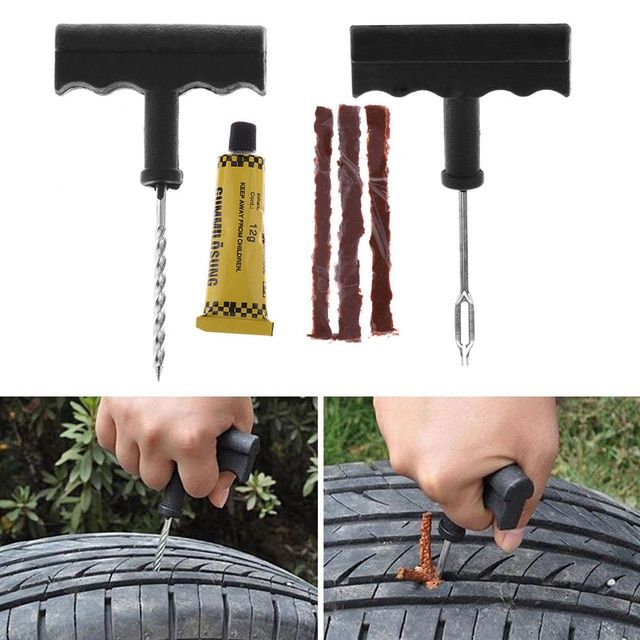 In case of mechanical damage, it allows quick replacement of parts, avoiding thermal damage to the zinc coating during their installation.
In case of mechanical damage, it allows quick replacement of parts, avoiding thermal damage to the zinc coating during their installation.
● The bottom of the trailer is made of laminated plywood with anti-slip coating and equipped with recessed load securing loops (6 pcs.) . Resistant to wear and moisture.
● Anodized aluminum sidewalls resist corrosion and are not susceptible to rust. They are made of a closed profile with stiffening ribs on the outer side, due to which they have increased resistance to dynamic and shock loads.
● Side rails galvanized. Thanks to additional dividing posts, the rigidity of the sides and their resistance to breaking are increased.
● multi-leaf spring suspension (4 springs x 7 leaves) with hydraulic shock absorbers maintains a stable ride under different trailer loads.
● Axles (2×1500 kg) and brake drums - manufactured by ALOIS KOBER Gmbh (Germany). Brake drums are equipped with protective caps, bearings do not require additional lubrication and adjustment throughout their entire service life.
Brake drums are equipped with protective caps, bearings do not require additional lubrication and adjustment throughout their entire service life.
● The undercarriage of the trailer is attached to a special power subframe , which takes on the main shock loads while driving and increases the reliability of the structure.
● Three autonomous braking systems: service, parking and emergency. Working brake system - for braking when driving as part of a road train. Parking brake system - for fixing the trailer while parking. Emergency braking system - for emergency braking in case of violation of the coupling with the tractor.
● Tow hitch designed to tow a trailer with a GVW of up to 2,700 kg. Type of vehicle hitch - ball Ø50 mm.
● Galvanized support wheel (500 kg) with handle thrust bearing. Height adjustable, keeps the trailer level and makes it easier to move without a tractor
● LED lighting technology with bayonet and AMP connectors.